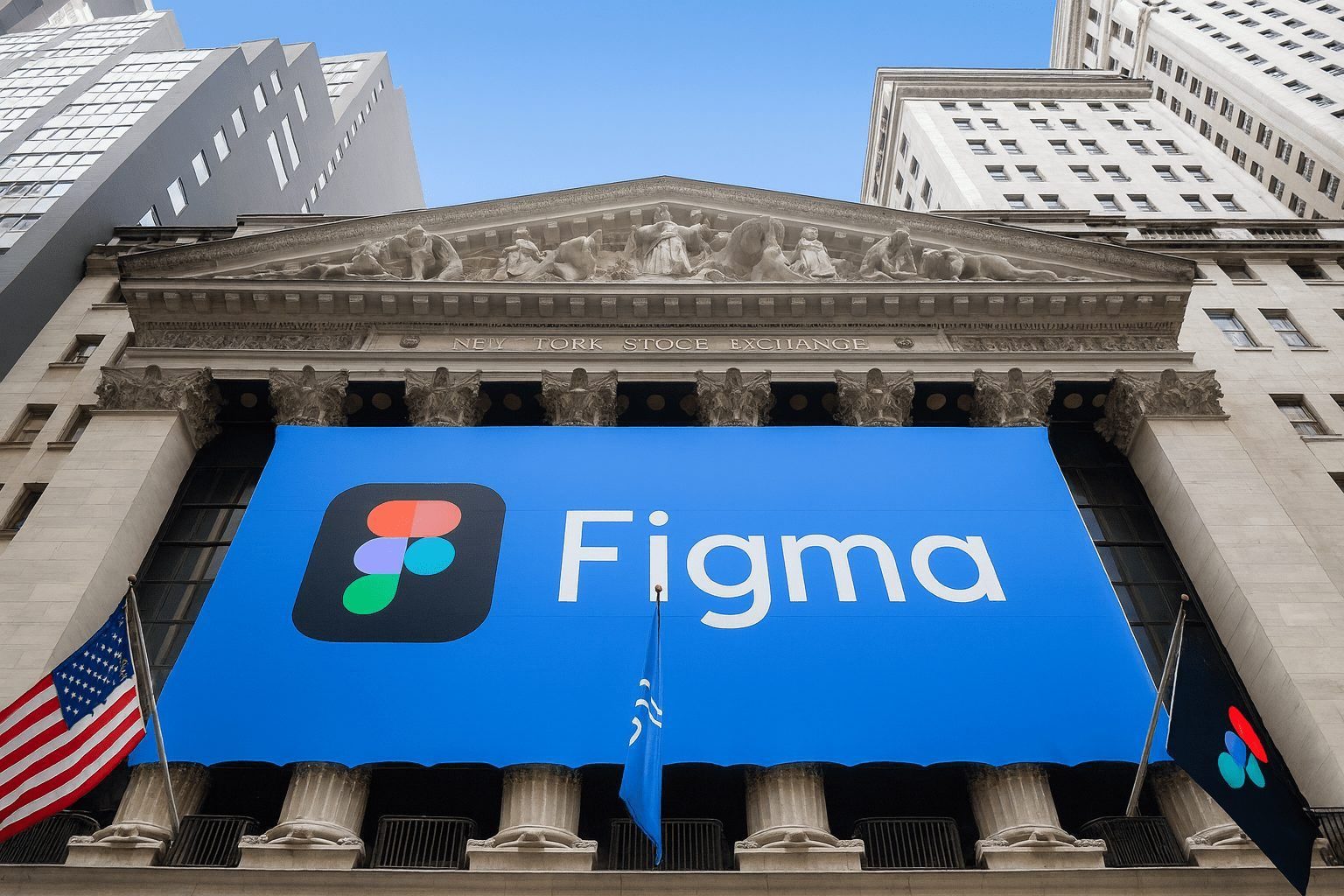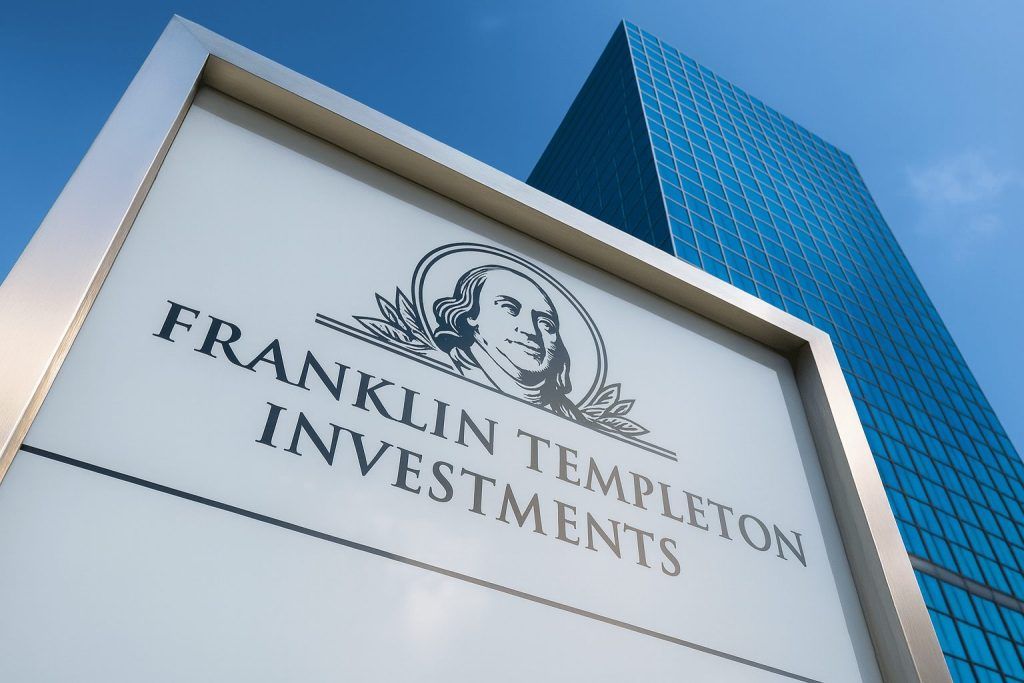Published: November 23, 2025
Figma’s first few months as a public company have turned into a stress test for investors’ nerves. The design‑software darling that once attracted a $20 billion takeover bid from Adobe now trades just above its $33 IPO price, after a brutal slide from August highs near $143 per share. [1]
As of this weekend, the story around Figma, Inc. (NYSE: FIG) is being reshaped by three big threads:
- A new AI data‑use class action lawsuit accusing Figma of misusing customer designs to train its models
- Heavy insider selling from the CEO, CFO and CRO following staged lock‑up expirations
- Fresh valuation debates, with multiple pieces published today arguing over whether FIG is now a bargain or a “valuation time bomb”
Here’s a detailed look at where Figma stock stands on November 23, 2025, and what’s new today.
Figma stock price on November 23, 2025
U.S. markets are closed for the weekend, so the latest official numbers are from Friday, November 21, 2025:
- Last close:$34.31 per share [2]
- Day move (Fri): +2.20% versus Thursday’s close of $33.57 [3]
- Intraday range (Fri): $32.83 – $34.56 [4]
- 52‑week range:$32.83 – $142.92 (all‑time low and high since the July IPO) [5]
- Market cap: about $17.0 billion [6]
- TTM revenue: roughly $969 million; Figma trades at about 17–18× trailing sales [7]
- Profitability:
- Analyst view: consensus “Hold” with an average 12‑month target near $65–68, implying roughly 90–100% upside from Friday’s close [10]
Performance has been painful:
- About ‑37% over the last month
- Roughly ‑60% over the past year, and about ‑76% below the August peak around $142.92 [11]
For a stock that briefly tripled on IPO day, FIG now sits firmly in “fallen high‑flyer” territory.
What’s new today (November 23, 2025)
Three pieces of coverage dated November 23, 2025 are shaping today’s narrative around Figma stock:
1. Valuation reset after steep share‑price decline (Simply Wall St via Yahoo)
A new Simply Wall St analysis, syndicated on Yahoo Finance today, focuses on Figma’s valuation after its recent crash. The piece notes that: [12]
- FIG’s 30‑day return is down more than a third, while the year‑to‑date performance has collapsed from the euphoric post‑IPO levels.
- Despite that drop, Figma still trades at a premium price‑to‑sales multiple versus many SaaS peers.
- The article weighs whether continued revenue growth in the high‑30% range and strong gross margins justify today’s multiple, or whether more multiple compression is likely.
In short, today’s Simply Wall St piece frames Figma as a high‑growth, now‑cheaper but still not “cheap” software stock.
2. “Mispriced opportunity or valuation time bomb?” (AInvest)
AInvest published a separate note today titled “Is Figma (FIG) a Mispriced Opportunity or a Valuation Time Bomb?” which leans into the bull‑vs‑bear debate. [13]
Key points from that analysis:
- Bull case:
- Bear case:
- Even after the sell‑off, Figma’s price‑to‑sales ratio sits well above sector averages, raising fears the stock could be a “valuation time bomb” if growth slows. [16]
The article essentially says both sides have ammo: fundamentals look excellent, but the stock is still priced for near‑flawless execution.
3. Local coverage of the AI data lawsuit (Bangalore Mirror)
India’s Bangalore Mirror “Bits & Bytes” column, updated today, picks up on the new U.S. class action accusing Figma of misusing customer designs to train its AI tools. [17]
The column reiterates the lawsuit’s claim that this alleged misuse helped support Figma’s “sky‑high valuation” in its $1.2 billion IPO, but also quotes Figma’s response:
The company says it does not use customer data to train models without explicit authorization, and that when it does, it de‑identifies data and focuses training on general patterns rather than specific user content.
That mix of legal risk headline + company rebuttal is now circulating globally via syndicated briefs like this one.
The AI data‑training lawsuit: headline risk gets real
The Bangalore write‑up is based on a proposed class action filed Friday in California federal court, first reported by Reuters and Bloomberg Law on November 21, 2025. [18]
According to those reports, the complaint alleges that Figma:
- Used customer designs and intellectual property without permission to train its generative AI tools
- Benefited from that training in the form of higher growth and valuation, especially around its July IPO
Figma, for its part, strongly denies that it trains models on customer content without consent and emphasizes safeguards around any opted‑in training datasets. [19]
Why it matters for FIG stock
At this early stage, the lawsuit is only an allegation, not a finding of wrongdoing. Still, for investors it introduces several layers of risk:
- Financial – potential legal costs and, in a worst‑case settlement scenario, damages or mandated product changes
- Reputational – Figma’s brand is built on trust with designers and product teams; AI‑related privacy concerns could slow adoption if not managed carefully
- Regulatory – the case lands as governments are still figuring out rules for AI training data, so it could influence (or be influenced by) future regulation
For now, the case mainly adds headline overhang to an already volatile stock.
From blockbuster IPO to sub‑IPO share price
It’s hard to make sense of Figma today without rewinding to the IPO and the aborted Adobe takeover.
Adobe’s failed $20 billion bid
Back in September 2022, Adobe agreed to buy Figma for about $20 billion in cash and stock—but abandoned the deal in December 2023 after U.K. and EU regulators raised serious antitrust concerns. Adobe paid Figma a $1 billion breakup fee, and both companies opted to stay independent. [20]
That set the stage for Figma to go public on its own.
July 2025 IPO and huge first‑day pop
Figma priced its IPO at $33 per share on July 30, 2025, targeting a fully‑diluted valuation around $16–19 billion and raising roughly $1.2 billion. [21]
Demand was explosive:
- Shares opened far above the offer price and at one point more than tripled, with early trading sending FIG to around $142.92—one of 2025’s wildest IPO pops. [22]
But the hangover has been equally dramatic. After a series of earnings and lock‑up headlines, FIG has:
- Shed roughly $11 billion in market value compared with its post‑IPO peak, according to recent Reuters and Yahoo coverage [23]
- Dipped below its $33 IPO price for the first time on Friday, trading as low as $32.83 before closing at $34.31 [24]
For new investors, that means you can now buy below the IPO price—but only after enduring a ~76% drawdown from the highs.
Under the hood: Q2 and Q3 2025 earnings
Despite the stock slide, Figma’s actual business performance looks very strong.
Q2 2025: profitable growth and AI expansion
In its second‑quarter 2025 results, Figma reported: [25]
- Revenue: $249.6 million, up 41% year‑over‑year
- GAAP income from operations: $2.1 million (1% margin)
- Non‑GAAP operating margin: 5%
- Net income: $28.2 million
- Operating cash flow: $62.5 million, with a 24% adjusted free‑cash‑flow margin
- Net dollar retention (customers >$10k ARR): 129%
- Customer scale:
- 11,906 customers with >$10k in ARR
- 1,119 customers with >$100k in ARR
The quarter also showed how aggressively Figma is expanding beyond its original design tool:
- Launch of Figma Make, Draw, Sites and Buzz to push deeper into AI‑assisted prototyping, illustration, website publishing and marketing assets
- Acquisition of Modyfi (motion/animation) and Payload (headless CMS)
- A majority of customers now using multiple Figma products
Together, those numbers helped justify Figma’s reputation as a top‑tier growth story heading into the IPO.
Q3 2025: record revenue, accounting hit
On November 5, 2025, Figma reported its third‑quarter 2025 results: [26]
- Revenue: $274.2 million, up 38% year‑over‑year, beating prior guidance and pushing annualized revenue past $1 billion
- Non‑GAAP operating income: $34.0 million (12% margin)
- Non‑GAAP net income: $62.4 million; non‑GAAP EPS about $0.10–$0.11, topping estimates near $0.05
- GAAP net loss: roughly $1.1 billion, with a ‑415% GAAP operating margin
The eye‑watering GAAP loss was almost entirely due to a one‑time, $975.7 million stock‑based compensation expense tied to the IPO. Underneath that, the business remained profitable on an adjusted basis.
CEO Dylan Field even called it “the best quarter in Figma’s history”, citing record revenue and fast adoption of AI products like Figma Make and its Dev Mode MCP server. [27]
So why is the stock so weak? To understand that, you have to look at supply and sentiment, not just demand.
Lock‑ups, dilution and insider selling
A complex lock‑up structure
Figma’s Q2 earnings release detailed a staged lock‑up plan for insiders and early investors: [28]
- An “Early Release” allowed 25% of certain employees’ shares to trade as early as September 5, 2025, if FIG traded at least 25% above the IPO price for several days (a threshold the stock easily cleared in August).
- An extended lock‑up covering about 54% of outstanding Class A shares runs until August 31, 2026, but with major partial releases:
- ~17.5% of those shares (about 38.9 million) eligible for sale after the Q3 2025 earnings announcement
- Additional blocks released after FY 2025 and Q1 2026 results
That means significant new share supply has been hitting the market right as investor enthusiasm cooled, amplifying volatility and downside moves.
CFO & CRO dump stock near 12‑month lows
A widely shared CoinCentral analysis last week highlighted big insider sales from Figma’s finance and revenue chiefs: [29]
- CFO Praveer Melwani
- Sold 53,624 shares between November 3 and 12, including blocks around $43–48
- Total proceeds roughly $2.4 million
- Still holds about 1.62 million shares, trimming his stake by less than 1%
- CRO Shaunt Voskanian
- Sold 403,335 shares on November 10 at about $43.39 per share (~$17.5 million)
- Also sold 26,741 shares earlier in November for about $1.28 million, in a transaction described in filings as tax withholding for RSU vesting
- Even after those sales, he still owns over 1.6 million shares, but his stake dropped by nearly 20%
CoinCentral notes that these deals happened as FIG traded near 12‑month lows and after the stock had already fallen sharply from August peaks. [30]
CEO Dylan Field’s $113 million sale
On top of that, a November 19 Investing.com piece flagged a massive insider sale by Figma’s co‑founder and CEO Dylan Field: [31]
- On November 17, 2025, Field sold about 3,029,063 Class A shares in two big blocks, for total proceeds of roughly $112.98 million at weighted‑average prices around $37–38.50.
- The filing notes that the sales were to cover tax‑withholding obligations tied to the vesting of restricted stock units, not a complete exit.
- The same day, Field converted an equal number of Class B shares into Class A, consistent with typical lock‑up‑related mechanics.
Investing.com also points out that, despite the selloff, Figma still boasts gross margins near 85% and more cash than debt, underlining that these insider moves don’t necessarily reflect business weakness. [32]
Still, the optics of C‑suite insiders selling tens of millions of dollars of stock while shares are falling and lock‑ups are expiring have clearly weighed on sentiment.
Why Figma stock is under pressure: the valuation debate
Even after the sell‑off, FIG is not a cheap stock in classical terms.
From data aggregators like StockAnalysis, TradingView and Investing.com: [33]
- Market cap: ~$17 billion
- TTM revenue: ~$969 million
- TTM price‑to‑sales: around 17.5×
- Forward P/E: over 150× based on consensus estimates
- No dividend
Recent analysis pieces highlight several tensions:
- Nasdaq/Motley Fool’s “What’s Wrong With Figma Stock?” argues that while Figma projects about 40% revenue growth to roughly $1.04 billion in 2025, its valuation still reflects very high expectations, including a forward P/E near 100 and questions about when GAAP profitability will become sustainable. [34]
- Earlier commentary from Yahoo Finance and Simply Wall St has similarly noted that FIG trades at richer multiples than many cloud peers, despite now being a “show‑me” stock after its post‑IPO volatility. [35]
- Today’s AInvest article leans into that dichotomy, presenting Figma as either a mispriced high‑growth opportunity or a valuation time bomb if AI‑driven upside disappoints. [36]
At the same time, analysts tracked by StockAnalysis and Investing.com still see meaningful upside:
- Average 12‑month price target: around $65–68 per share
- Upside vs. Friday close: roughly 90–100%
- Consensus rating: solidly in the “Hold” to “Neutral/Moderate Buy” band [37]
In other words, Wall Street has re‑rated Figma down, but not abandoned it.
Key risks and opportunities for FIG from here
What the bull case is watching
- Sustained 30–40%+ revenue growth
- Q2 and Q3 show Figma can still grow revenue high‑30s to low‑40s percent with expanding non‑GAAP margins and strong net dollar retention. [38]
- AI as a growth accelerant, not a threat
- Products like Figma Make, Dev Mode MCP and AI‑powered design tools are driving higher engagement and multi‑product adoption. Bulls see Figma as an AI‑native workflow platform, not a victim of generative design tools. [39]
- Massive market and strong balance sheet
- With ~$1.6 billion in cash and securities as of Q2 and no dividend drain, Figma has plenty of runway to keep investing in R&D and acquisitions. [40]
- Comparison to Adobe’s abandoned $20B offer
- With a market cap around $17B, some commentators argue investors are now paying less than Adobe was willing to pay privately in 2022, despite higher current revenue. [41]
What the bear case is worried about
- Valuation still rich versus peers
- A ~17–18× TTM sales multiple and triple‑digit forward P/E leave little room for execution missteps or macro shocks. [42]
- Lock‑up overhang and insider optics
- Ongoing lock‑up releases into 2026, combined with recent CEO, CFO and CRO sales, could keep supply elevated and sentiment fragile. [43]
- Legal and regulatory uncertainty around AI training
- The new class action over data use adds a regulatory and reputational wild card that’s hard to model but easy for traders to react to. [44]
- Post‑IPO volatility and competition
- Commentators from Reuters, Yahoo and Seeking Alpha have pointed to sharp post‑earnings drops, heavy dilution optics, and intensifying competition in collaborative design and AI tools. [45]
What to watch next
For investors following FIG after today’s valuation pieces and lawsuit coverage, a few upcoming checkpoints matter most:
- Next earnings update
- TradingView and other data providers currently flag mid‑March 2026 as the next expected earnings window, which would cover Q4 and full‑year 2025 results. [46]
- That report will show whether Figma can sustain 30–40%+ growth, expand non‑GAAP margins and provide a clearer path to GAAP profitability.
- Developments in the AI data lawsuit
- Any early motions, responses or potential settlement signals will shape how serious investors judge this new risk to be. [47]
- Further lock‑up releases and insider activity
- Additional tranches of extended lock‑up shares become eligible for sale after FY 2025 and Q1 2026 earnings, which could be another supply shock if sentiment hasn’t stabilized. [48]
- Analyst revisions and AI product traction
- Price‑target and rating moves from key coverage banks—plus any new adoption metrics for Figma’s AI features—will indicate whether the Street is leaning toward “mispriced opportunity” or “valuation time bomb.” [49]
Bottom line
As of November 23, 2025, Figma stock sits at a crossroads:
- The business is firing on cylinders: >35% revenue growth, strong net retention, expanding AI product lines and non‑GAAP profitability.
- The stock, however, is down around 60% from late‑summer highs, trades below its IPO pop levels, and carries overhangs from rich valuation, insider selling, lock‑up releases and a fresh AI data lawsuit.
Whether FIG from here becomes a classic post‑IPO comeback story or an example of AI‑era overvaluation will depend on how convincingly Figma can keep growing, navigate legal scrutiny and eventually deliver durable, GAAP‑level profitability.
Note: This article is for information and news analysis only and does not constitute financial advice, investment recommendation or a solicitation to buy or sell any security.
References
1. www.reuters.com, 2. investor.figma.com, 3. stockanalysis.com, 4. stockanalysis.com, 5. stockanalysis.com, 6. stockanalysis.com, 7. stockanalysis.com, 8. stockanalysis.com, 9. investor.figma.com, 10. stockanalysis.com, 11. www.tradingview.com, 12. finance.yahoo.com, 13. www.ainvest.com, 14. investor.figma.com, 15. investor.figma.com, 16. stockanalysis.com, 17. bangaloremirror.indiatimes.com, 18. www.reuters.com, 19. bangaloremirror.indiatimes.com, 20. www.theverge.com, 21. www.figma.com, 22. techfundingnews.com, 23. finance.yahoo.com, 24. finance.yahoo.com, 25. investor.figma.com, 26. investor.figma.com, 27. investor.figma.com, 28. investor.figma.com, 29. coincentral.com, 30. coincentral.com, 31. www.investing.com, 32. www.investing.com, 33. stockanalysis.com, 34. www.nasdaq.com, 35. www.perplexity.ai, 36. www.ainvest.com, 37. stockanalysis.com, 38. investor.figma.com, 39. investor.figma.com, 40. investor.figma.com, 41. www.nasdaq.com, 42. stockanalysis.com, 43. investor.figma.com, 44. www.reuters.com, 45. www.reuters.com, 46. www.tradingview.com, 47. www.reuters.com, 48. investor.figma.com, 49. www.investing.com









